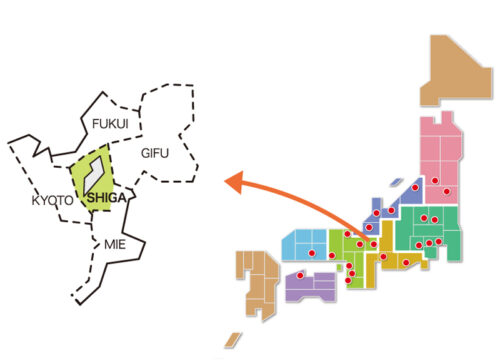Koto Region

Linen fabrics produced by Lake Biwa
The Koto region in Shiga Prefecture is encircled by mountains and has high humidity from Lake Biwa alongside. Its moist climate, tailor-made for the weaving, dyeing and finishing processes that linen production requires, was key to the growth of linen textile production here, which has gone from strength to strength. Since the moisture strengthens the linen fibres and makes the weaving easier, some factories even maintain their strength by spraying them with water mist in winter. Linen, which is also used for fire hoses, can helps prevent leaks when used to contain water, while its strength and water resistance need no further introduction.
In bygone days, the Koto region was a transport hub and a post station on the Nakasendo Highway (connecting Tokyo and Kyoto in the Edo Period), with links to Osaka and Kyoto proving particularly crucial. It allowed the merchants originating from the then Omi province (present-day Shiga Prefecture) to distribute their linen fabrics throughout the country. From the Muromachi Period (1336-1573) onward, traditional techniques unique to the region were established and inherited, such as Omi’s linen printing and Omi jofu (Omi ramie cloth); said to involve two months of work to produce a single fabric roll. Over and above apparel alone, the region has also seen products like stoles, towels and masks increasingly emerge.
